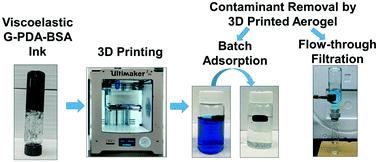(Superbug killer: New nanotech destroys bacteria and fungal cells)
2021/4/14 オーストラリア連邦・ロイヤルメルボルン工科大学(RMIT)

・ RMIT、豪州・スインバン工科大学およびディーキン大学が、多種の薬剤耐性菌や真菌細胞を破壊する、黒リン(balck phosphorus: BP)のナノ薄膜コーティングを開発。
・ BP は、次世代エレクトロニクス開発で関心が寄せられている超薄膜 2D 材料。その抗菌・抗真菌特性は認識されていたが、臨床用途の可能性について系統的な検証がなかった。本研究では、インプラントや包帯に使用されるチタンや綿の表面に塗布した BP のナノ薄膜層が病原菌の死滅に効果的であることを発見した。
・ 抗生物質耐性は、少なくとも毎年 70 万人の死亡原因となっている世界的な健康への脅威。新規の抗生物質治療法が開発されなければ、死亡者数は 2050 年までに 1 億人に達し、医療費は 100 兆 USドルにも上ると推定される。
・ 真菌感染症による健康負荷はそれほど知られていないが、世界の年間死亡者数は 150 万人で増加の一途をたどっている。一般的な真菌のアスペルギルス属は致死率の高い二次感染の原因で、COVID-19 による入院患者への新たな脅威となっている。
・ BP ナノ薄膜コーティイングは、細菌や真菌を物理的な攻撃により死滅させるデュアル殺菌材料であるため、微生物がこれに適応して自然な防御機能を獲得するには数百万年を要する。
・ 臨床現場への同材料の導入にはさらに研究を進める必要があるが、深刻な健康課題に対処するより効果的な方法の探求における新しい方向性と考える。
・ RMIT では、人工知能技術や脳の動作を模倣したエレクトロニクスの開発において、BP を使用した画期的な研究を過去に実施している。酸素で容易に劣化する BP の特性はエレクトロニクスでは問題であったが、微生物の殺滅には最適なものとなった。BP の分解により細菌や真菌の細胞表面が酸化され、最終的に引き裂かれて死滅する。
・ 大腸菌やメチシリン耐性黄色ブドウ球菌(MRSA)、カンジダ・オーリスを含む 5 種類の真菌等の一般的な細菌株で BP ナノ薄膜コーティングの有効性を試験した結果、僅か 2 時間で 99%の細菌・真菌を破壊。また、24 時間以内での BP の完全な崩壊も確認。身体内に蓄積せずに効果的な殺滅機能を保証する最適な BP レベルを特定した。
・ BP 薄膜層の調整により、様々な医療用途の表面での効果の試験を開始。特許出願済みの同技術の開発をさらに進めるため、産業パートナーを探している。
URL: https://www.rmit.edu.au/news/all-news/2021/apr/antimicrobial-nanotech
<NEDO海外技術情報より>
(関連情報)
ACS Applied Materials & Interfaces 掲載論文(アブストラクトのみ:全文は有料)
Broad-Spectrum Solvent-free Layered Black Phosphorus as a Rapid Action Antimicrobial
URL: https://pubs.acs.org/doi/10.1021/acsami.1c01739
Abstract
Antimicrobial resistance has rendered many conventional therapeutic measures, such as antibiotics, ineffective. This makes the treatment of infections from pathogenic micro-organisms a major growing health, social, and economic challenge. Recently, nanomaterials, including two-dimensional (2D) materials, have attracted scientific interest as potential antimicrobial agents. Many of these studies, however, rely on the input of activation energy and lack real-world utility. In this work, we present the broad-spectrum antimicrobial activity of few-layered black phosphorus (BP) at nanogram concentrations. This property arises from the unique ability of layered BP to produce reactive oxygen species, which we harness to create this unique functionality. BP is shown to be highly antimicrobial toward susceptible and resistant bacteria and fungal species. To establish cytotoxicity with mammalian cells, we showed that both L929 mouse and BJ-5TA human fibroblasts were metabolically unaffected by the presence of BP. Finally, we demonstrate the practical utility of this approach, whereby medically relevant surfaces are imparted with antimicrobial properties via functionalization with few-layer BP. Given the self-degrading properties of BP, this study demonstrates a viable and practical pathway for the deployment of novel low-dimensional materials as antimicrobial agents without compromising the composition or nature of the coated substrate.



